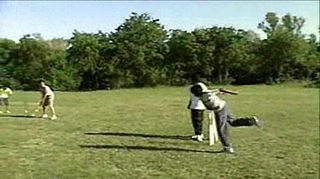Negligence is a failure to exercise appropriate and/or ethical ruled care expected to be exercised amongst specified circumstances. The area of tort law known as negligence involves harm caused by failing to act as a form of carelessness possibly with extenuating circumstances. The core concept of negligence is that people should exercise reasonable care in their actions, by taking account of the potential harm that they might foreseeably cause to other people or property.

A consistory court is a type of ecclesiastical court, especially within the Church of England where they were originally established pursuant to a charter of King William the Conqueror, and still exist today, although since about the middle of the 19th century consistory courts have lost much of their subject-matter jurisdiction. Each diocese in the Church of England has a consistory court.

The St. Regis Toronto is a mixed-use skyscraper located in the downtown core of Toronto, Ontario, Canada. It was built by Markham-based Talon International Development Inc., which is owned by Canadian businessmen Val Levitan and Alex Shnaider. The hotel portion of the building is owned by InnVest Hotels LP, which acquired it in 2017.

Anns v Merton London Borough Council[1977] UKHL 4, [1978] AC 728 was a decision of the House of Lords that established a broad test for determining the existence of a duty of care in the tort of negligence, called the Anns test or sometimes the two-stage test for true third-party negligence. The case was overruled by Murphy v Brentwood DC [1991].

Los Osos is an unincorporated town and census-designated place (CDP) in San Luis Obispo County, California, United States. Located on the Central Coast of California, Los Osos had a population estimated to be 16,533 in 2019.
Volenti non fit iniuria is a common law doctrine which states that if someone willingly places themselves in a position where harm might result, knowing that some degree of harm might result, they are not able to bring a claim against the other party in tort or delict. Volenti applies only to the risk which a reasonable person would consider them as having assumed by their actions; thus a boxer consents to being hit, and to the injuries that might be expected from being hit, but does not consent to his opponent striking him with an iron bar, or punching him outside the usual terms of boxing. Volenti is also known as a "voluntary assumption of risk".
Loss of chance in English law refers to a particular problem of causation, which arises in tort and contract. The law is invited to assess hypothetical outcomes, either affecting the claimant or a third party, where the defendant's breach of contract or of the duty of care for the purposes of negligence deprived the claimant of the opportunity to obtain a benefit and/or avoid a loss. For these purposes, the remedy of damages is normally intended to compensate for the claimant's loss of expectation. The general rule is that while a loss of chance is compensable when the chance was something promised on a contract it is not generally so in the law of tort, where most cases thus far have been concerned with medical negligence in the public health system.

Miller v Jackson [1977] QB 966 is a famous Court of Appeal of England and Wales case in the torts of negligence and nuisance. The court considered whether the defendant - the chairman of a local cricket club, on behalf of its members - was liable in nuisance or negligence when cricket balls were hit over the boundary and onto the property of their neighbours, Mr and Mrs Miller, the plaintiffs.
Aetna Health Inc. v. Davila, 542 U.S. 200 (2004), was a United States Supreme Court case in which the Court limited the scope of the Texas Healthcare Liability Act (THCLA). The effective result of this decision was that the THCLA, which held Case Management and Utilization Review decisions by Managed Care entities like CIGNA and Aetna to a legal duty of care according to the laws of The State of Texas could not be enforced in the case of Health Benefit plans provided through private employers, because the Texas statute allowed compensatory or punitive damages to redress losses or deter future transgressions, which were not available under ERISA § 1132. The ruling still allows the State of Texas to enforce the THCLA in the case of Government-sponsored (Medicare, Medicaid, Federal, State, Municipal Employee, etc., Church-sponsored, or Individual Health Plan Policies, which are saved from preemption by ERISA. The history that allows these Private and Self-Pay Insurance to be saved dates to the "Interstate Commerce" power that was given the federal Government by the Supreme Court. ERISA, enacted in 1974, relied on the "Interstate Commerce" rule to allow federal jurisdiction over private employers, based on the need of private employers to follow a single set of paperwork and rules for pensions and other employee benefit plans where employers had employees in multiple states. Except for private employer plans, insurance can be regulated by the individual states, and Managed Care entities making medical decisions can be held accountable for those decisions if negligence is involved, as allowed by the Texas Healthcare Liability Act.
Economic loss is a term of art which refers to financial loss and damage suffered by a person which is seen only on a balance sheet and not as physical injury to person or property. There is a fundamental distinction between pure economic loss and consequential economic loss, as pure economic loss occurs independent of any physical damage to the person or property of the victim. It has also been suggested that this tort should be called "commercial loss" as injuries to person or property can be regarded as "economic".

Spartan Steel & Alloys Ltd v Martin & Co (Contractors) Ltd [1973] QB 27 is a well-known English Court of Appeal case concerning the recovery of pure economic loss in negligence.
Administrative liability in English law is an area of law concerning the tortious liability of public bodies in English law. The existence of private law tort applying to public bodies is a result of Diceyan constitutional theory suggesting that it would be unfair if a separate system of liability existing for government and officials. Therefore, a public body which acts ultra vires is liable in tort is a cause of action can be established just like any individual would be. An ultra vires action will not, per se, give rise to damages Therefore, a claimant will have to fit into one of the recognised private law courses of action. These areas in which a public body can incur private liability in tort were described by Lord Browne Wilkinson in X v Bedfordshire County Council [1995] 3 All ER 353 (HL).

Wheeler v JJ Saunders Ltd [1994] EWCA Civ 32 is an English Court of Appeal case on nuisance which amended the precedent set by Gillingham Borough Council v Medway (Chatham) Dock Co Ltd. Wheeler was a veterinary surgeon who owned Kingdown Farm House; the wider farm was owned by J.J. Saunders Ltd, who used it for raising pigs. After Saunders gained planning permission for a pair of pig houses, Wheeler brought an action in nuisance, alleging that the smell of the pigs interfered with his use and enjoyment of the land. When the case went to the Court of Appeal, Saunders argued that the granting of planning permission for the pig houses had changed the nature of the area, as in Gillingham, making the nuisance permissible. The Court of Appeal rejected this argument, holding that a pair of pig houses was not a sufficient development to change the nature of an area; the centre of the Gillingham case had been a commercial dock, which was a sufficient development.

Dutton v Bognor Regis Urban District Council [1972] 1 QB 373 is an English contract law and English tort law case concerning defective premises and the limits of contract damages. It was disapproved by the House of Lords in Murphy v Brentwood DC and is now bad law except in Canada and New Zealand.

Cuckmere Brick Co v Mutual Finance[1971] EWCA Civ 9 is an English tort law case, establishing the lender must publish/promote the materially beneficial key, intrinsic facts as to land in mortgage repossession sales. As it affects the duty of mortgagees, to that extent it can be considered within the periphery of English land law also.

Brown v Heathcote County Council [1986] 1 NZLR 76 is a cited case in New Zealand regarding council liability for negligent inspection.

Stieller v Porirua City Council [1986] 1 NZLR 84 is a cited case in New Zealand regarding council liability in tort for negligent inspection.

Invercargill City Council v Hamlin [1994] 3 NZLR 513, [1996] 1 NZLR 513 is a cited case in New Zealand regarding council liability for negligent inspection, as well the issue in tort when the start period for the statute of limitations for a latent defect begins.

Mount Albert Borough Council v Johnson [1979] 2 NZLR 234 is a cited case in New Zealand regarding the Statute of Limitations defence in tort claims.

Walsh v Jones Lang Lasalle Ltd [2017] IESC 38, is a decision of the Irish Supreme Court in which the court held that a purchaser bears the risk of reliance on erroneous information unless the vendor has clearly assumed responsibility for its accuracy. In reaching this decision, the court clarified the law in Ireland "in relation to the effect of statements disclaiming liability in actions claiming negligent misstatement."










